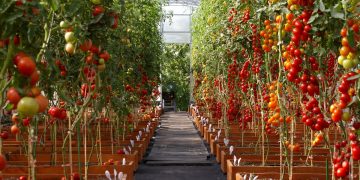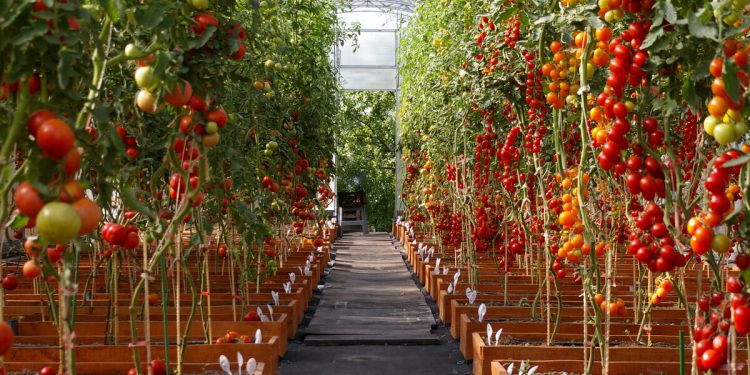How a High-Tech Greenhouse in Sichuan Province is Setting a New Standard for Agricultural Innovation and Efficiency
In the heart of southwest China’s Sichuan Province, a groundbreaking project is redefining sustainable agriculture and international cooperation. The China-France Agricultural Science and Technology Park, located in Gaoping district, Nanchong City, features an intelligent greenhouse that stands as a beacon of technological advancement and ecological farming. This initiative, a key project promoted at the 21st United Nations Climate Change Conference, exemplifies the potent synergy between China and France in agricultural innovation.
The Genesis of a Visionary Project
The construction of this impressive park began in February 2017, and it has since completed 12,000 mu (800 hectares) of its planned 17,000 mu (1,133 hectares) total area. The intelligent greenhouse, occupying 30 mu and backed by an investment of 100 million yuan ($13.78 million), is the first semi-enclosed greenhouse operating efficiently in all weather conditions in southwest China. This state-of-the-art facility symbolizes the integration of cutting-edge agricultural technologies and the collaborative spirit between China and France.
Technological Marvels and Agricultural Excellence
Managed by Jiang Min, the intelligent greenhouse leverages advanced digital management systems to monitor and control the lifecycle of cherry tomatoes, ensuring optimal yield and efficiency. “Unlike traditional cultivation, these cherry tomatoes are digitally managed and controlled throughout their lifecycle. The yield and efficiency are very impressive,” said Jiang Min. The core equipment and main consumables for the greenhouse are sourced directly from France, reflecting a blend of global expertise and local application.
The greenhouse is part of a broader vision to showcase the latest in agricultural technology. It stands as an exemplary project demonstrating how international cooperation can lead to significant advancements in agricultural practices. This collaboration not only enhances productivity but also promotes sustainable and environmentally friendly farming methods.
A Hub for Innovation and Sustainability
The China-France Agricultural Science and Technology Park serves as a living laboratory for showcasing the benefits of modern agricultural technologies. It highlights how intelligent systems can improve agricultural output while reducing environmental impact. The park’s semi-enclosed greenhouse design is particularly noteworthy, as it allows for efficient operation in varying weather conditions, which is a significant advantage in the diverse climatic regions of southwest China.
Economic and Ecological Benefits
For entrepreneurs and investors, this project represents a compelling opportunity to engage with cutting-edge agricultural technology and sustainable practices. The intelligent greenhouse’s success in Gaoping district is a testament to the potential of high-tech solutions in transforming traditional farming methods. The impressive yield and efficiency of the cherry tomatoes grown here demonstrate the economic viability of such innovations.
Moreover, the project’s commitment to sustainability aligns with global trends towards more eco-friendly farming practices. By reducing dependency on traditional cultivation methods and embracing digital management, the greenhouse minimizes waste and maximizes resource use. This approach not only supports environmental goals but also enhances the profitability and scalability of agricultural enterprises.
A Model for Future Agricultural Development
The China-France Agricultural Science and Technology Park is more than just a showcase of agricultural prowess; it is a model for future development in the sector. The park’s success underscores the importance of international cooperation in addressing global challenges such as food security and climate change. By integrating advanced technologies and sustainable practices, this project paves the way for similar initiatives worldwide.
Conclusion
The intelligent greenhouse in Gaoping district stands as a testament to what can be achieved when nations collaborate towards common goals. For investors, entrepreneurs, and those interested in sustainable agriculture, this project offers valuable insights into the future of farming. It demonstrates that with the right blend of technology and international cooperation, it is possible to achieve impressive agricultural outcomes that are both economically and environmentally sustainable.


































